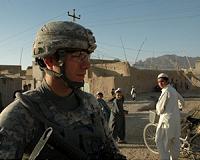| . |  |
. |
Caracas, Venezuela (UPI) Jan 31, 2011 Troubled Venezuelan defense manufacturer CAVIM faces renewed disruptions in its plans to revamp its operations after explosions and fire gutted one of its main depots in the northern city of Maracay, 80 miles west of Caracas. The blasts and fire left one woman dead and three others with injuries. Senior aides to President Hugo Chavez announced a comprehensive investigation was under way but couldn't say if the blasts and fire were accidental or the result of sabotage. There were no immediate reports of arrests. The explosions occurred late Sunday and engulfed the arms depot buildings, witnesses told Venezuelan media. Authorities evacuated about 10,000 inhabitants of the Maracay district where the depot is located. State Gov. Rafael Isea announced all civilian structures within a 5-mile radius were cleared as part of a security operation that went on for seven hours. Emergency services including medical teams worked through the night to restore safe conditions. Officials didn't say if they allowed all residents to return to their original dwellings or whether some remained in temporary accommodation. Venezuelan Vice President Elias Jaua told state television VTV an investigation had started but "we cannot conclude anything yet." He said "all scenarios and theories will be evaluated." Isea initially said about 40 people were injured by shrapnel or bullets but officials later reported only three were injured and taken to hospital. CAVIM has been struggling with an ambitious program for development and regeneration after a series of setbacks, including funding cuts by the government and technology mismatch after bungled military accords with foreign suppliers, including Russia. CAVIM invested heavily in a plan to manufacture prototypes of the Russian AK-47 assault rifle to equip its armed forces. CAVIM began operations in 1975 as the Compania Anonima Venezolana de Industrias Militares. A presidential decree issued to get the company started declared an intention to encourage growth of a domestic defense industry and to make Venezuela self-sufficient in basic requirements of assault rifles and guns for the armed forces. Soon after establishment, CAVIM fell victim to cutbacks forced on oil-producing Venezuela by falling prices in the 1980s. After an erratic first few years, CAVIM decided to concentrate on developing a capacity for the production of small arms and ammunition, explosives and patrol craft for the Venezuelan navy. Most of the chemical industrial manufacturing for the defense industry is concentrated in Moron, Venezuela's major industrial and petrochemical center. The Moron site includes a nitric acid plant and units for producing nitrocellulose, explosives and charges. Moron is an ideal location for military chemical manufacturing as it is already a Venezuela's major petrochemical industry center. The town is close to raw materials including crude oil and gas, salt, pyrite, phosphate and limestone. The fire occurred in the depot for the Maracay plant which produces guns and ammunition, has a non-ferrous foundry and a metal-mechanical processing facility. In February, 2006, CAVIM announced the production of the Pistola Zamorana, Venezuela's first domestically produced handgun -- a 9mm weapon with a stock for 15 rounds. The same year Venezuela announced it had paid Russia for the licensing rights to produce AK-47s. Developments at the company have been slow in recent years.
Share This Article With Planet Earth
Related Links The latest in Military Technology for the 21st century at SpaceWar.com
 US troops revamp training for foggy battlefields
US troops revamp training for foggy battlefieldsFort Benning, Georgia (AFP) Jan 30, 2011 As the war in Afghanistan enters its 10th year the US military is shaking up its traditional training regimen to prepare troops for the country's complex battlefields. At boot camps nowadays soldiers are taught to think on their toes as they prepare for missions that will require them not only to fight shadowy enemies on rough terrain but also protect civilians caught in the crossfire. " ... read more |
|
| The content herein, unless otherwise known to be public domain, are Copyright 1995-2010 - SpaceDaily. AFP and UPI Wire Stories are copyright Agence France-Presse and United Press International. ESA Portal Reports are copyright European Space Agency. All NASA sourced material is public domain. Additional copyrights may apply in whole or part to other bona fide parties. Advertising does not imply endorsement,agreement or approval of any opinions, statements or information provided by SpaceDaily on any Web page published or hosted by SpaceDaily. Privacy Statement |